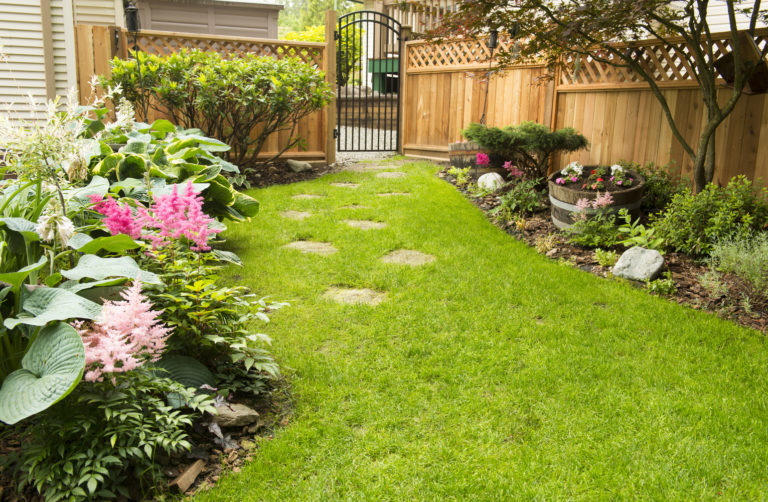People define “spring cleaning” as a method of combing through the indoors of their house and getting rid of whatever they do not need for the upcoming year. The outside cleanup tends to end up being a rush job when the Memorial Day BBQ comes close. So why wait on the outside cleanup? When the last of the frost lifts and temperatures consistently stay above freezing, you can begin work on the outside of your home.
Sure, cleaning indoors and outdoors at the same time could be overwhelming. It helps to take things slow. With several weeks of spring, you are bound to have plenty of time. Here is a quick checklist of things to attend to outside.
Lawn
The most sensible place to begin your outdoor spring preparations is your lawn. Once the snow has melted away, and the temperatures have been over freezing for a few days, the soil should be ready for some long-needed care.
Survey your yard for trouble spots. If the lawn gets a lot of traffic or whether pets have littered on your grass, find the affected areas and sprinkle soil over them, along with a combination of fertilizer and grass seed. Make sure to keep the dirt moist (not soaked) until the seeds germinate.
You should also pick up any loose branches, pine cones, twigs, and pet droppings. Most importantly, you should rake the leaves off the ground. Ensure that you rake when the ground is dry however, as raking over wet grass can tear the grass from its roots, leaving you more patches to deal with. Instead of bagging the twigs and leaves up, consider implementing them as the foundation of a compost pile.
Trees, Shrubs, and Perennials
For a beautiful, clean, and inviting look for your yard, give the plants a solid spring start by clipping away any dead, dying or diseased branches. This will allow maximum sunlight and air to reach the center of the shrubs and trees. It is also a good idea to cut back any branches that could encroach on walkways or high-traffic areas to prevent them from getting broken over the warm months.
When pruning, keep in mind that not all plants should be approached in the same way. Consider the following helpful tips:
Ornamental Grasses: Tie up the tops of the grasses to cut them easily and quickly, then snip as close to the ground as you can. Semi-woody Perennials: Cut any butterfly bushes or Russian sage back to about 4 inches tall. Broad-level evergreens: Prune the injured foliage from these evergreens, but wait until the early summer months to hedge them. Flowering trees: Before the flowers, like roses and hydrangeas bloom fully, you should remove any damaged, crowded or dead steps, and shape the tree as desired.Garden Beds
Once the cold has passed and soil has thawed, start raking leaves, digging up dead plants, removing branches/twigs and weeding to give the flowers more room to grow. All of the debris in the flower beds is essentially suffocating to the flowers.
Remove last year’s mulch to give you room to add a new layer once the spring planting is completed. Dig up perennials such as hostas and daylilies, and divide them up into three stem groupings. You can then fill any sparse areas in the garden bed with them to give it a more full look.
If you are looking to add more garden beds, use a tiller to break some new ground, or build raised beds. You can plant trees and shrubs as well as hardy perennial flowers in the early spring, but wait until after the final frost of the season plant the tender ones.
Patio and Pathways
For a clean look or to prep to entertain at your residence, you should clear up your patio and other pathways. To clean the patio furniture, spray it down with a hose, and once it’s soaked, use a nylon brush in tandem with a solution consisting of a generous amount of dish soap and warm water to scrub it down. You can reduce drying time by tipping the furniture on its side to let gravity assist the water in coming off.
For wicker furniture, you can use a soft cloth drenched in water mixed with mild soap to wipe the furniture’s surface. You can use an old toothbrush to remove any remaining dirt from grooves. Let it dry fully before using it.
When moisture gets trapped beneath the yard debris and planters, mold will start to grow. To remove the mildew stain, a combination of liquid chlorine bleach (2 cups), 2 1/2 tablespoons of powdered laundry detergent and 1 1/2 cups of warm water can be used. Apply the solution liberally on the mildew and let it saturate for 10 to 15 minutes, then scrub the stains with a stiff broom, following up with a thorough rinse from a hose. To clean your patio, first, clear it of any objects, then sweep away the debris and hose it down. Using a mop, spread a mix of one cup of baking soda and two cups of distilled white vinegar on the patio surface, and let it sit for about 30 minutes. You can scrub it down with a nylon-bristled brush.


Comments are closed.